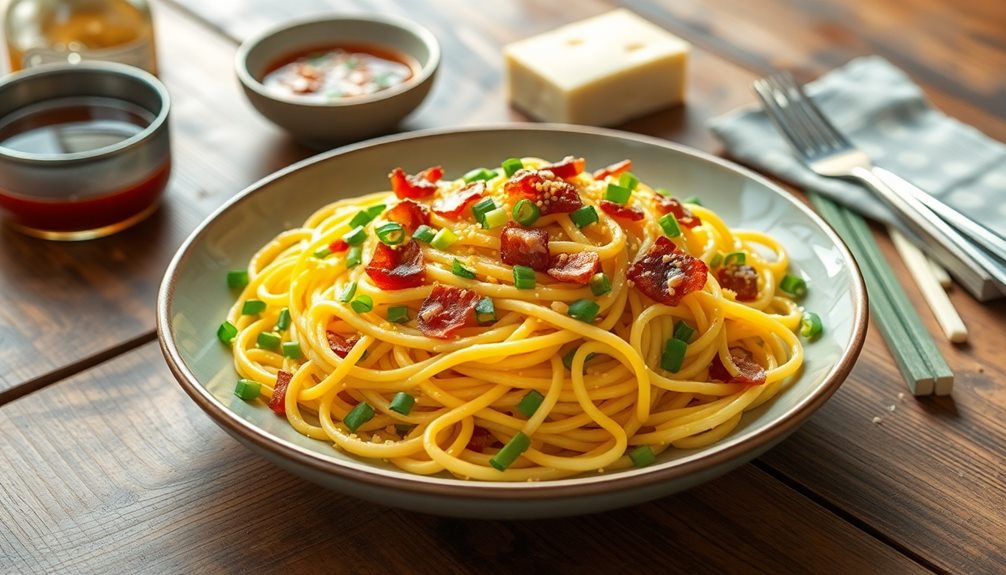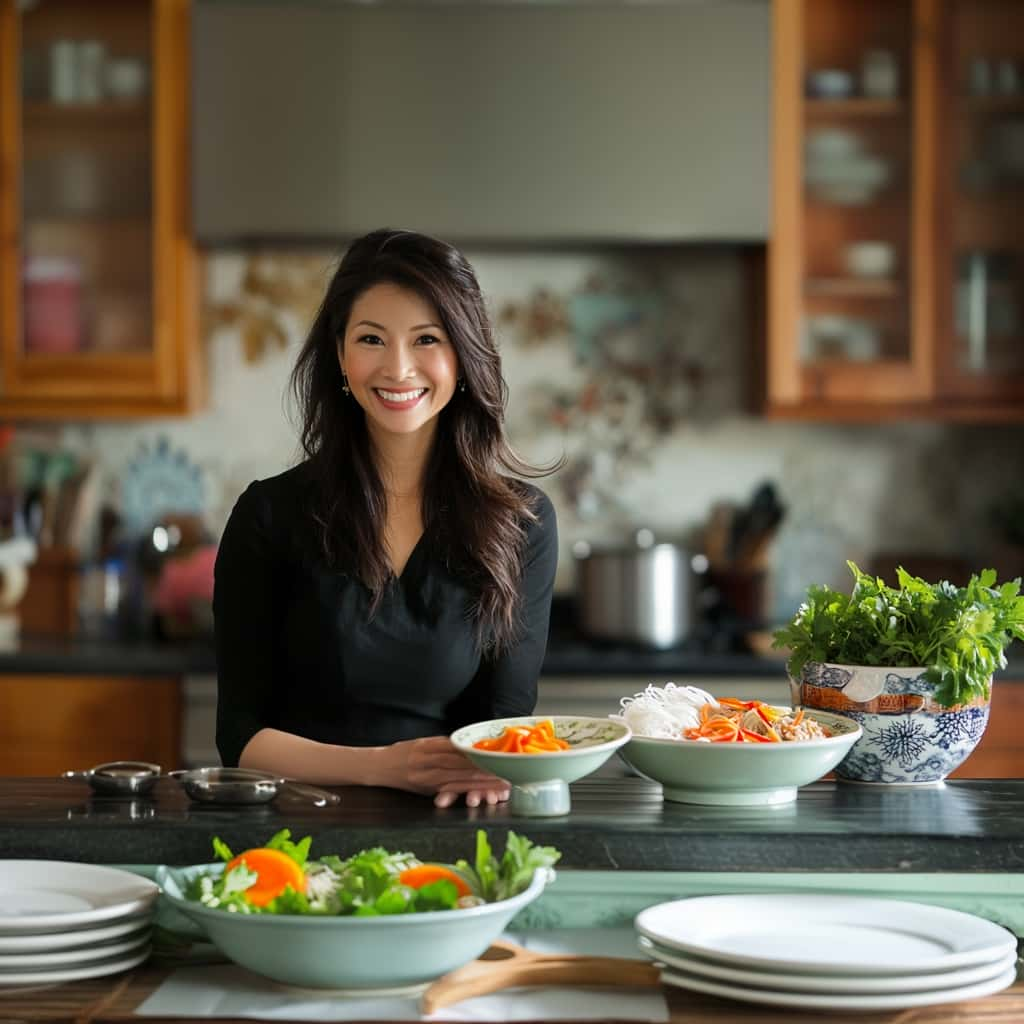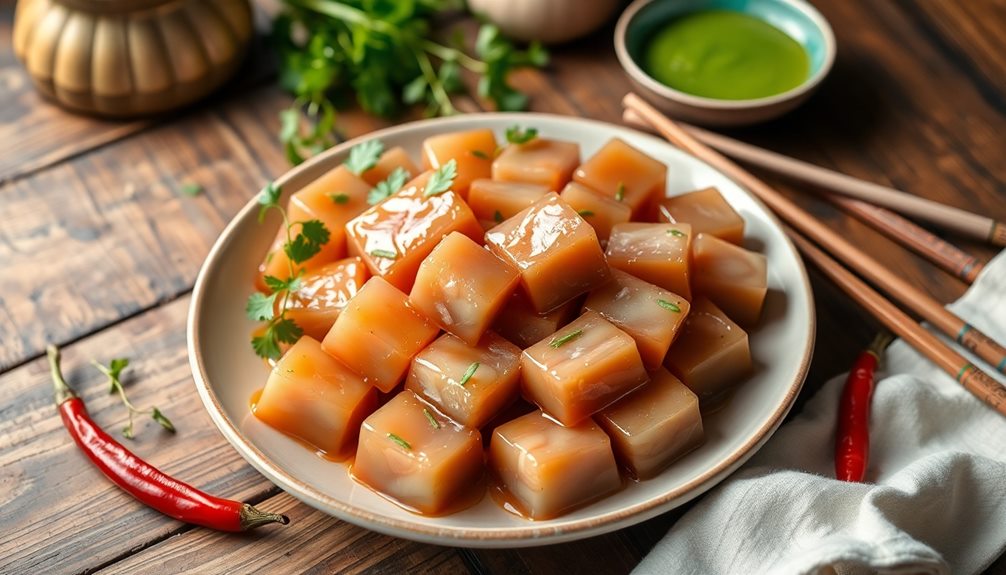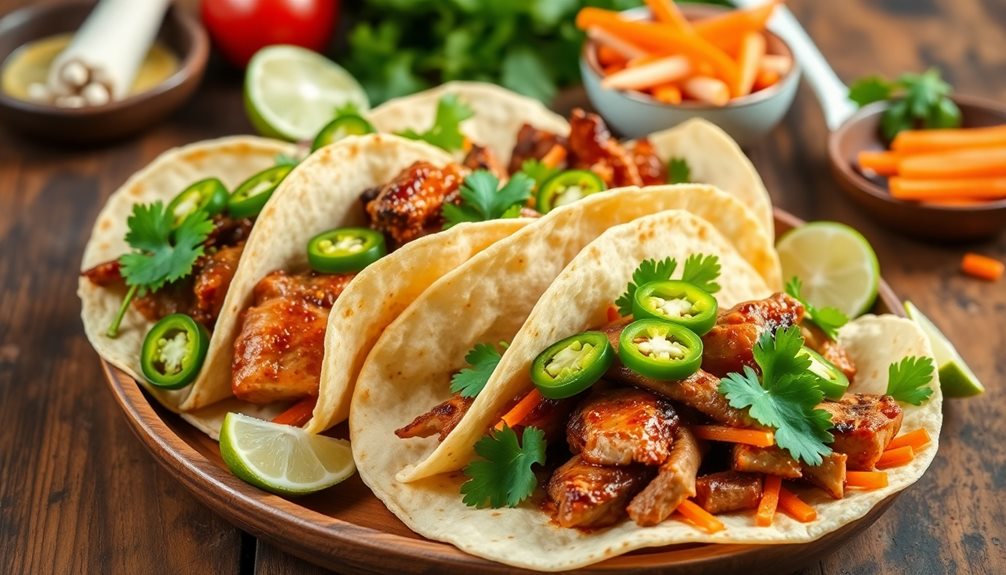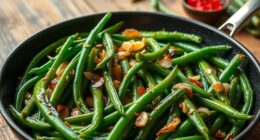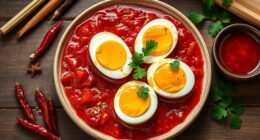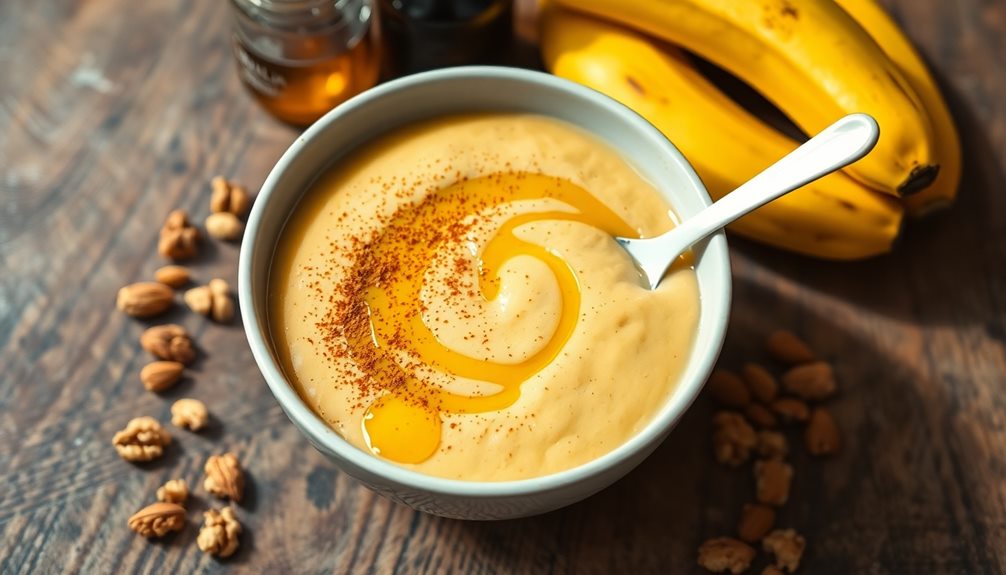Embark on a flavorful journey through Vietnam's culinary tapestry by discovering the many mouthwatering forms of bánh! These beloved rice cakes trace their roots back centuries, with each variety reflecting the unique cultural heritage of different regions. From the square bánh chưng to the cylindrical bánh tét, you'll be captivated by the tender, pillowy textures and diverse fillings that showcase Vietnam's culinary artistry. Whether steamed, grilled, or deep-fried, these versatile treats can be enjoyed in both traditional and modern preparations, making them a true delight for the senses. Dive deeper to uncover the rich history, traditional recipes, and community significance that make bánh a cherished part of Vietnamese culture.
Key Takeaways
- Vietnam's traditional rice cakes, known as bánh, come in diverse regional varieties, each reflecting the local culture and culinary heritage.
- Bánh can be prepared through various cooking methods, including steaming, grilling, and deep-frying, offering a range of textures and flavors.
- Bánh chưng, a square-shaped rice cake, is a beloved dish often associated with the Lunar New Year celebrations in Vietnam.
- The preparation of bánh involves intricate techniques, such as soaking, steaming, and shaping, showcasing the craftsmanship of Vietnamese cuisine.
- Serving bánh with a variety of toppings, from crushed peanuts to sweetened mung bean, enhances the cultural experience and diversity of this traditional delicacy.
History
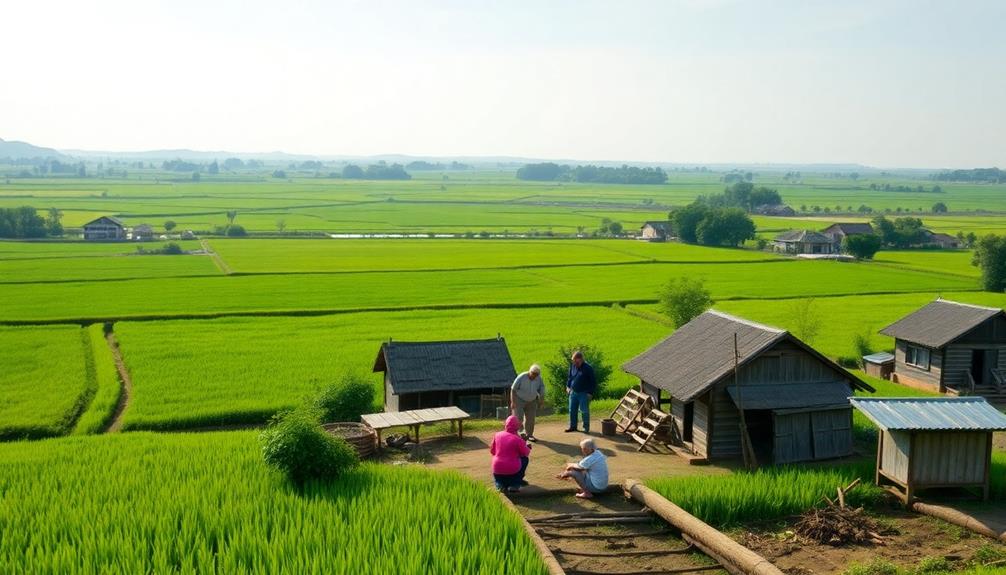
Although the origins of Vietnamese rice cake can be traced back centuries, it has endured as a beloved culinary tradition in the country. This delectable treat, known as bánh, comes in a wide variety of shapes, sizes, and flavors, each reflecting the rich cultural tapestry of Vietnam. Made from rice flour or glutinous rice, many variations of bánh are often wrapped in banana leaves and steamed to perfection. Each region in Vietnam has its own spin on these cakes, with some of the most beloved versions like bánh nậm, which hails from the central region. For those looking to recreate this savory delight at home, following a traditional banh nam recipe ensures the authentic balance of flavors and texture that make it a favorite.
Historians believe that the earliest forms of bánh emerged during the Ly dynasty, when the dish was often served as an offering to the gods. Over time, bánh evolved, with different regions developing their own unique styles and recipes.
In the north, you'll find the delicate and aromatic bánh chưng, while the south is renowned for its diverse array of bánh, from the savory bánh mì to the sweet bánh bò.
Celebrating special occasions, such as Tết (the Lunar New Year), has always been a time to savor the many varieties of Vietnamese rice cake. Whether you're enjoying a traditional bánh or exploring a new type, each bite is a delightful journey through Vietnam's culinary heritage.
Recipe

The Vietnamese rice cake, known as bành chưng, is a traditional dish that has been a staple in Vietnamese cuisine for centuries. This savory and flavorful dish is typically consumed during the Lunar New Year celebration, but it can be enjoyed year-round.
The key to a successful bành chưng is the careful selection and preparation of the ingredients. The rice cake is made by wrapping a mixture of glutinous rice, mung bean, and pork in banana leaves, resulting in a delectable and visually appealing dish.
- 2 cups glutinous rice
- 1 cup mung bean, peeled and split
- 1 pound pork shoulder or belly, diced
- 1 tablespoon soy sauce
- 1 teaspoon ground black pepper
- 1 teaspoon salt
- Banana leaves, cut into 8-inch squares
- Toothpicks or string for tying
To prepare the dish, first soak the glutinous rice in water for at least 4 hours or overnight. Drain the rice and set aside. In a bowl, mix the mung bean, pork, soy sauce, black pepper, and salt.
Place a square of banana leaf shiny side down, and spoon a layer of rice onto the center. Add a portion of the mung bean and pork mixture, then top with another layer of rice. Fold the banana leaf over the filling and secure it with toothpicks or string. Repeat this process until all the ingredients are used.
Place the wrapped rice cakes in a steamer and steam for approximately 6 to 8 hours, or until the rice is cooked through and the filling is tender.
When cooking bành chưng, it's important to be patient and allow the rice cakes to steam for the recommended duration. This ensures that the rice is thoroughly cooked and the flavors have had time to meld together.
Additionally, be mindful of the banana leaves, as they can easily tear if not handled with care. With a little practice and attention to detail, you can create an authentic and delicious Vietnamese rice cake that will impress your guests.
Cooking Steps
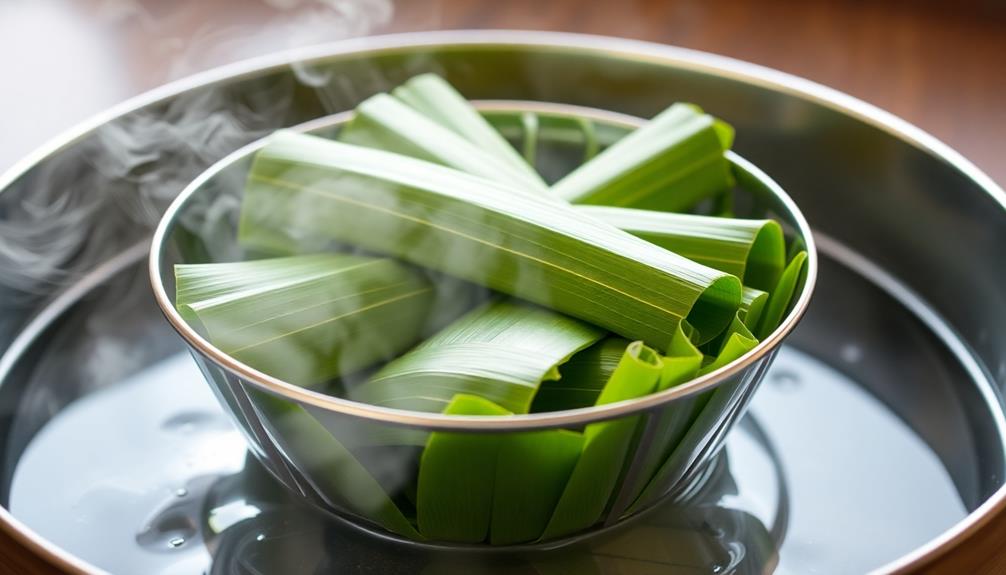
First, you'll need to soak the glutinous rice overnight.
In the morning, grind the soaked rice into a smooth batter.
Next, steam the rice batter until it's cooked through.
Step 1. Soak Glutinous Rice Overnight
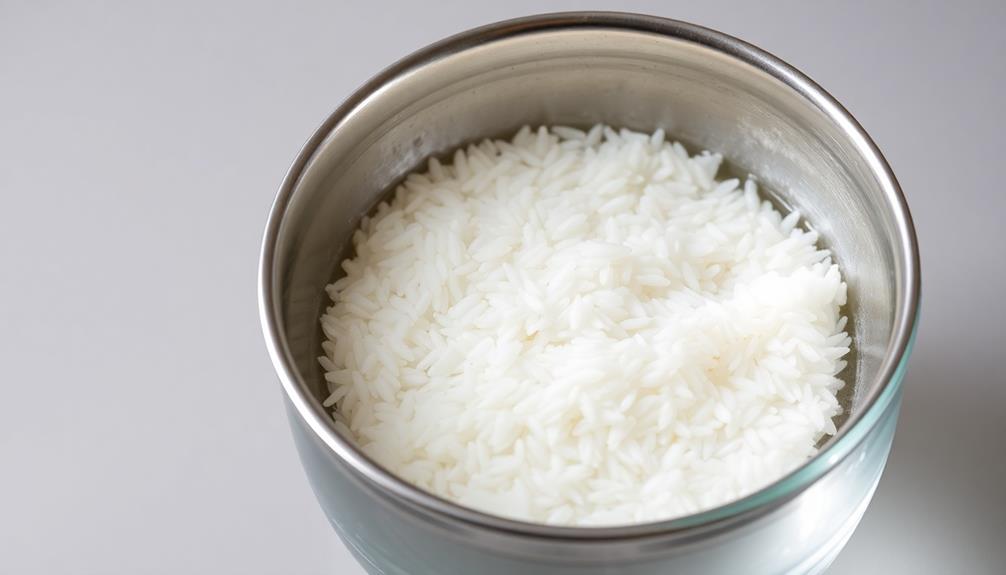
Begin the soaking process by placing the glutinous rice in a large bowl and covering it with water.
Let the rice soak overnight, allowing the grains to fully absorb the liquid. This important step softens the rice, making it easier to work with later on.
The next morning, you'll notice the water has taken on a milky, cloudy appearance. This is a sign the rice has been sufficiently soaked.
Drain the rice, discarding the soaking water. Now, the rice is ready to be steamed, a crucial step in creating the pillowy, chewy texture of authentic Vietnamese rice cakes.
Step 2. Grind the Soaked Rice
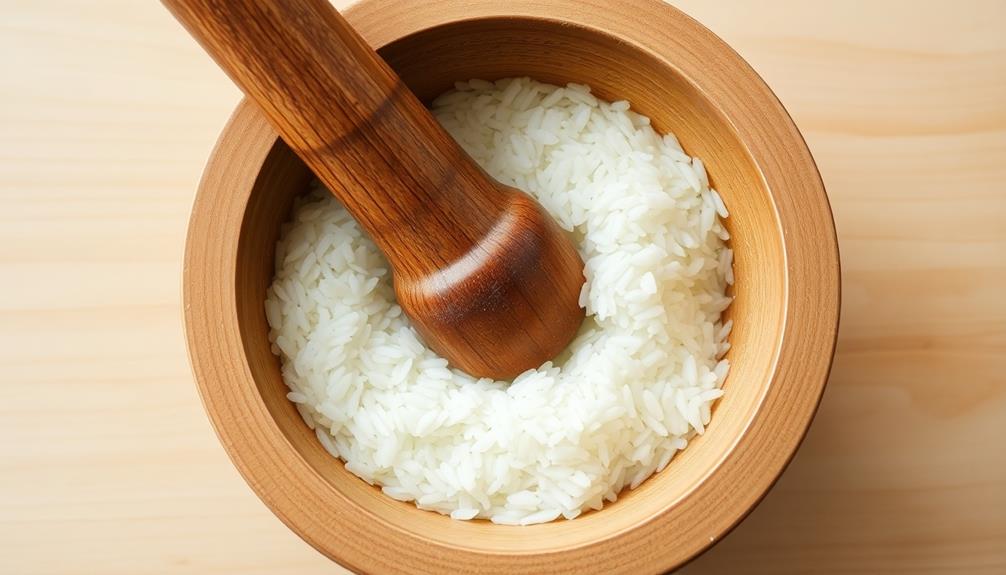
Once the glutinous rice has soaked overnight, you'll need to grind it into a fine, smooth paste. This is a crucial step in crafting authentic Vietnamese rice cakes. Don't worry, it's easier than it sounds!
First, grab your trusty blender or food processor. Add the soaked rice, along with a splash of water, and let the machine work its magic. Blend until the mixture transforms into a silky, lump-free batter. Adjust the water as needed to achieve the perfect consistency – not too thick, not too thin.
Next, strain the ground rice through a fine-mesh sieve. This will ensure your batter is velvety smooth, ready for the next step of the rice cake-making journey. Gather up any leftover bits and give them a final whirl in the blender for a seamless texture.
With the hard part out of the way, you're well on your way to creating delectable Vietnamese rice cakes bursting with flavor and tradition. Let's keep the momentum going!
Step 3. Steam the Rice Batter
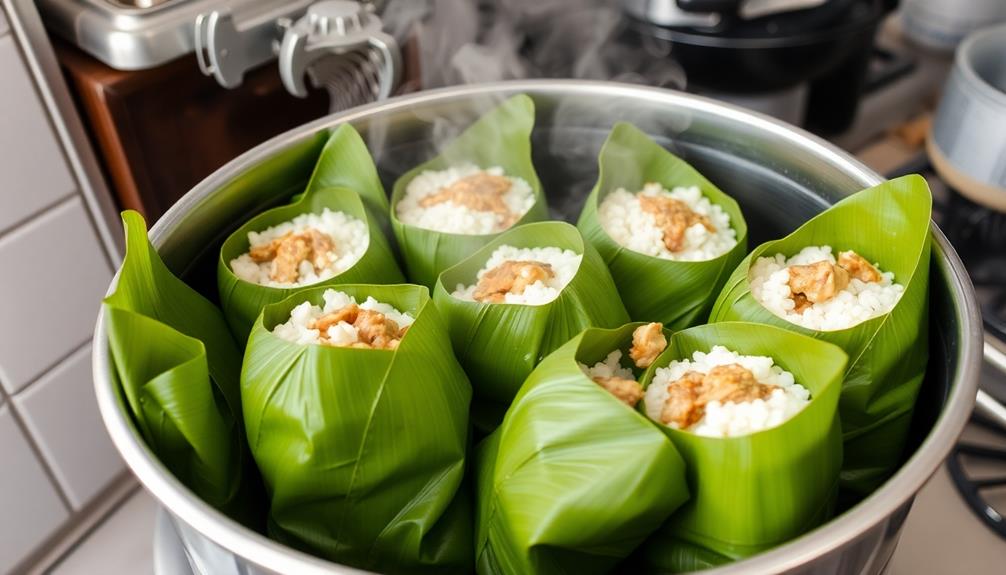
With the rice batter now smooth and lump-free, it's time to steam it into pillowy-soft rice cakes. You'll need a steamer basket or a pot with a tight-fitting lid.
Gently pour the batter into the steamer basket, being careful not to overfill it. You don't want the cakes to stick together! Cover the steamer and let the rice batter steam for about 15-20 minutes. As the cakes cook, they'll puff up and become wonderfully light and airy.
Once they're done, use a spatula to gently remove the steamed rice cakes from the basket. They should have a beautiful, smooth texture – perfect for decorating or serving as-is.
Feel free to experiment with different shapes or sizes to make them extra special. Whether you enjoy them plain or with your favorite toppings, these Vietnamese rice cakes are sure to delight your tastebuds and bring a taste of tradition to your table.
Step 4. Shape the Steamed Batter
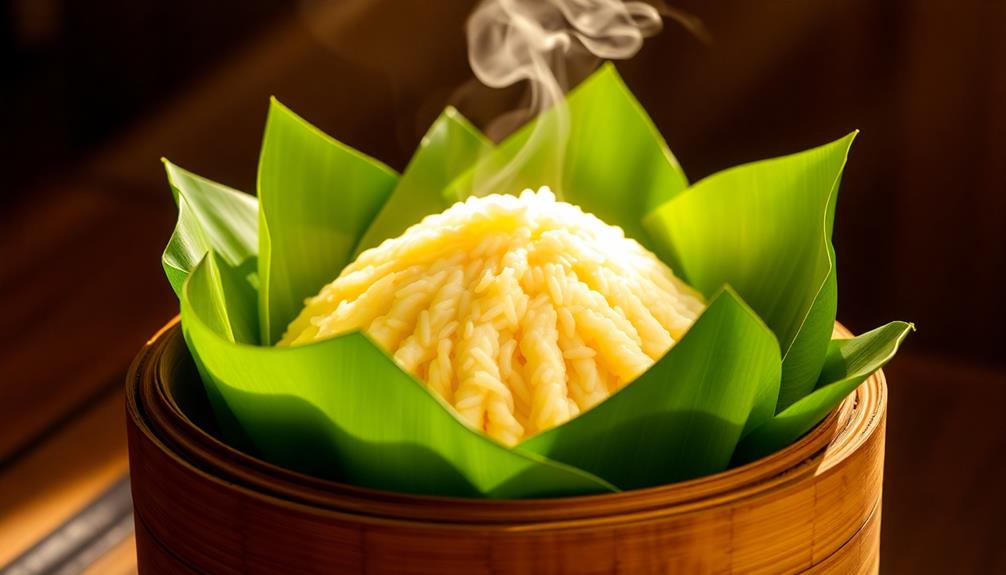
Now that the rice batter has been steamed into soft, pillowy cakes, it's time to shape them. Get ready to have some fun! You can use your hands to mold the dough into all sorts of creative shapes. Maybe you'll make little balls, or flatten them into discs. You could even try pinching and twisting the dough to form intricate patterns.
Once you've shaped the cakes, it's time to add some finishing touches. You might want to drizzle on a bit of coconut milk or sprinkle on some toasted sesame seeds. This adds a delightful flavor and texture. If you're feeling extra creative, you could even fill the cakes with sweet mung bean or savory meat mixtures.
Shaping the rice batter is a wonderful way to get the whole family involved in the cooking process. Embrace your inner artist and see what unique shapes you can come up with. The possibilities are endless, so let your imagination run wild!
Step 5. Serve With Desired Toppings
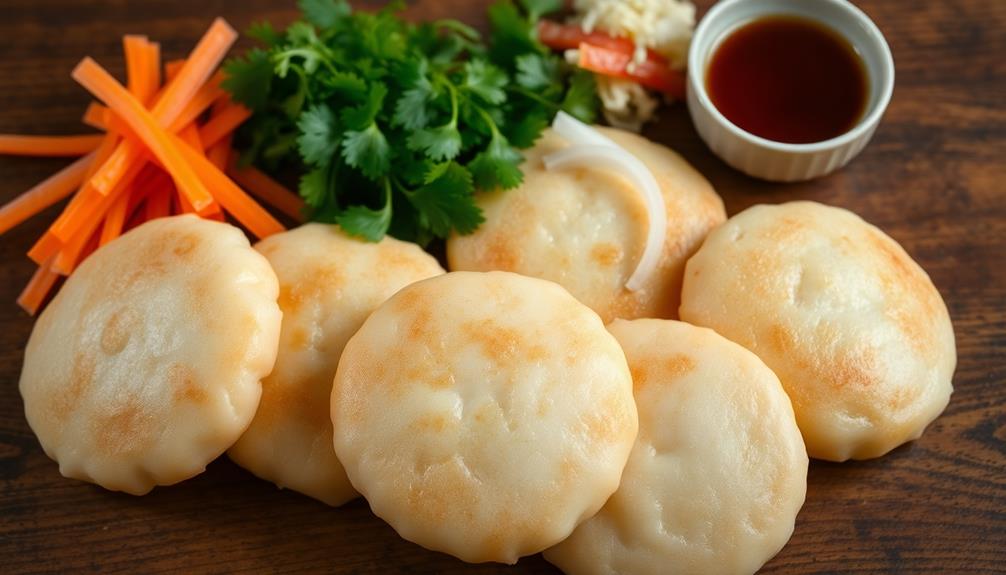
After shaping the rice cakes, you can serve them with your desired toppings. The beauty of Vietnamese rice cakes is their versatility – you can customize them however you like!
Some classic toppings include:
- Savory toppings like crushed peanuts, shredded coconut, or mung bean paste
- Sweet toppings like sugar, grated coconut, or sweetened mung bean
- Fruit like sliced banana, jackfruit, or lychee
- Herbs and spices like cilantro, scallions, or a sprinkle of salt
The possibilities are endless! Get creative and experiment with different flavor combinations.
You can even serve the rice cakes with a dipping sauce on the side, like a sweet and tangy fish sauce. Gather your family and friends, and enjoy this delightful Vietnamese treat together.
The vibrant colors and flavors will make every bite a delightful experience. So go ahead, top your rice cakes and savor the taste of Vietnam!
Final Thoughts

Vietnamese rice cake, a beloved delicacy, has captivated our palates and ignited a profound appreciation for the culinary artistry of Vietnam. From the tender, pillowy texture to the diverse array of fillings and toppings, each bite unveils a symphony of flavors that celebrate the country's rich cultural heritage.
As you've discovered, these rice cakes can be enjoyed in a myriad of ways, whether steamed, grilled, or even deep-fried. The versatility of this humble yet extraordinary dish never ceases to amaze.
Whether you savor a classic bánh chưng or experiment with modern interpretations, the joy of discovering new variations is half the fun.
As you continue your culinary journey, remember that Vietnamese rice cakes aren't merely a meal but a cultural experience. Embrace the flavors, the traditions, and the sense of community that these delicacies embody.
With every indulgent bite, you'll uncover the true essence of Vietnamese cuisine and the warm hospitality that defines this captivating country.
Frequently Asked Questions
What Is the Nutritional Value of Vietnamese Rice Cakes?
Vietnamese rice cakes provide a good source of carbohydrates and can be part of a balanced diet. They're often low in fat and calories, making them a healthy snack or side dish option.
How Long Do Vietnamese Rice Cakes Typically Last?
Vietnamese rice cakes typically last for 3-5 days when stored properly in the refrigerator. They can be frozen for up to 2-3 months to extend their shelf life. Proper storage is key to ensuring their freshness.
Can Vietnamese Rice Cakes Be Frozen for Later Use?
Yes, you can freeze Vietnamese rice cakes for later use. They'll keep for several months in the freezer, and you can thaw and reheat them when you're ready to enjoy them.
Are There Any Gluten-Free or Vegan Variations of Vietnamese Rice Cakes?
Yes, there are gluten-free and vegan variations of Vietnamese rice cakes. You can find them made with rice flour, coconut milk, and plant-based fillings like mung bean, tapioca, or taro.
Where Can I Buy Vietnamese Rice Cake Ingredients Online or In-Store?
You can find Vietnamese rice cake ingredients like glutinous rice flour, tapioca starch, and pandan leaves at Asian grocery stores or online specialty retailers. Many Asian supermarkets carry these essential ingredients for making traditional Vietnamese rice cakes.

